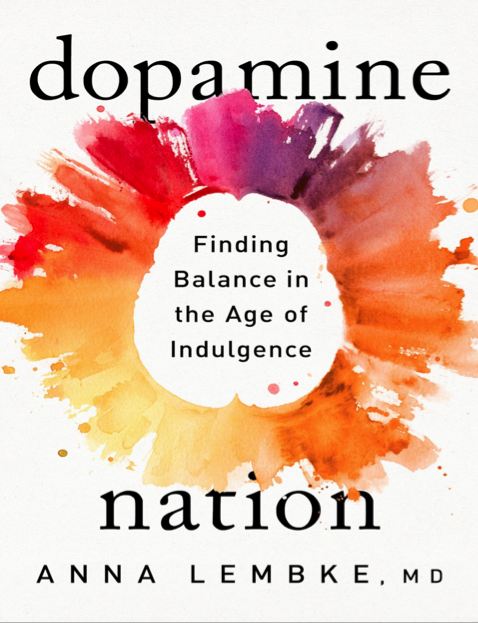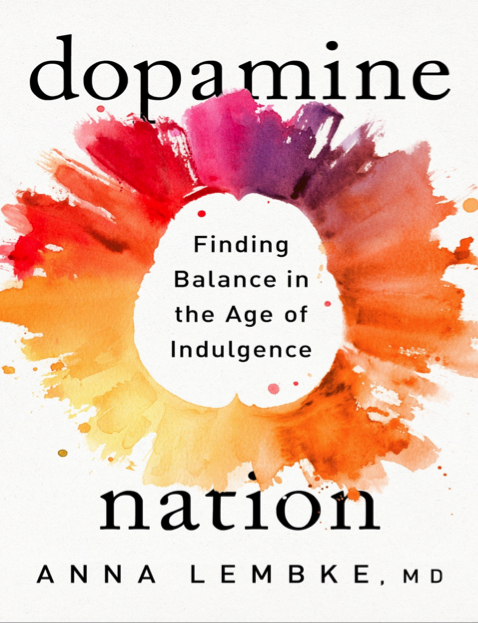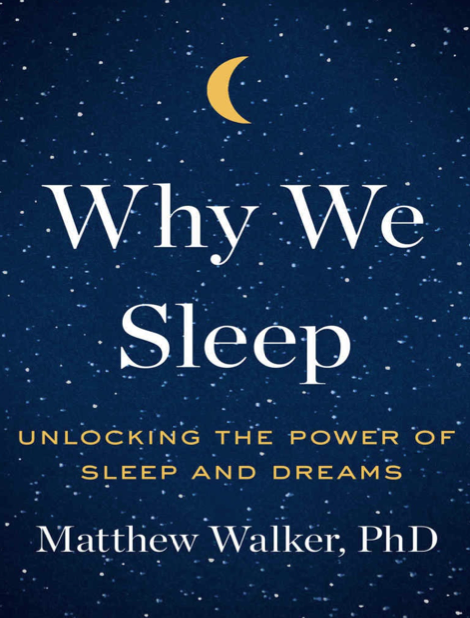Dopamine Nation: Finding Balance in the Age of Indulgence | Dr. Anna Lembke
![]()
![]()
Anna Lembke Medical Clinical Psychology Sociological Study of Medicine Emotional Mental Health Neuroscience Biology Los Angeles Times Bestseller New York Times Bestseller
- درباره کتاب
- بخشی از کتاب
- نسخه چاپی فارسی
- نظرات
INSTANT NEW YORK TIMES and LOS ANGELES TIMES BESTSELLER
“Brilliant… riveting, scary, cogent, and cleverly argued.”—Beth Macy, author of Dopesick
As heard on Fresh Air
This book is about pleasure. It’s also about pain. Most important, it’s about how to find the delicate balance between the two, and why now more than ever finding balance is essential. We’re living in a time of unprecedented access to high-reward, high-dopamine stimuli: drugs, food, news, gambling, shopping, gaming, texting, sexting, Facebooking, Instagramming, YouTubing, tweeting… The increased numbers, variety, and potency is staggering. The smartphone is the modern-day hypodermic needle, delivering digital dopamine 24/7 for a wired generation. As such we’ve all become vulnerable to compulsive overconsumption.
In Dopamine Nation, Dr. Anna Lembke, psychiatrist and author, explores the exciting new scientific discoveries that explain why the relentless pursuit of pleasure leads to pain…and what to do about it. Condensing complex neuroscience into easy-to-understand metaphors, Lembke illustrates how finding contentment and connectedness means keeping dopamine in check. The lived experiences of her patients are the gripping fabric of her narrative. Their riveting stories of suffering and redemption give us all hope for managing our consumption and transforming our lives. In essence, Dopamine Nation shows that the secret to finding balance is combining the science of desire with the wisdom of recovery.
Editorial Reviews
Review
“Anna Lembke deeply understands an experience I hear about often in the therapy room at the nexus between our modern addictions and our primal brains. Her stories of guiding people to find a healthy balance between pleasure and pain have the power to transform your life.”
—Lori Gottlieb, “Dear Therapist” columnist at The Atlantic, New York Times bestselling author of Maybe You Should Talk to Someone
“Just when you thought you knew all you needed to know about the addiction crisis, along comes Dr. Anna Lembke with her second brilliant book on the topic—this one not about a drug but about the most powerful chemical of all: the dopamine that rules the pain and pleasure centers of our minds. In an era of overconsumption and instant gratification, Dopamine Nation explains the personal and societal price of being ruled by the next fix—and how to manage it. No matter what you might find yourself over-indulging in—from the internet to food to work to sex—you’ll find this book riveting, scary, cogent, and cleverly argued. Lembke weaves patient stories with research, in a voice that’s as empathetic as it is clear-eyed.”
—Beth Macy, author of Washington Post Best Book of the Year, New York Times Notable Book of 2018 and bestseller Dopesick: Dealers, Doctors, and the Drug Company That Addicted America
“We all desire a break from our routines and those parts of life that upset us. What if, instead of trying to escape these things, we learn to turn toward them, to reach a peaceful harmony with our selves and the people we share our lives with? Lembke has written a book that radically changes the way we think about mental illness, pleasure, pain, reward, and stress. Turn toward it. You’ll be happy you did.”
—Daniel Levitin, New York Times bestselling author of The Organized Mind and Successful Aging
“Explore[s] the dichotomy between seeking a readily accessible hit of dopamine—from our phones, gambling, or a bag of Fritos—and maintaining healthy, productive, stable lives.”
—The New York Times, Inside the Best-Seller List
“[An] eye-opening survey on pleasure-seeking and addiction… Readers looking for balance will return to Lembke’s informative and fascinating guidance.”
—Publishers Weekly starred review
“… fascinating case histories, and a sensible formula for treatment.”
—Kirkus Reviews
About the Author
Anna Lembke is the medical director of Stanford Addiction Medicine, program director for the Stanford Addiction Medicine Fellowship, and chief of the Stanford Addiction Medicine Dual Diagnosis Clinic. She is the recipient of numerous awards for outstanding research in mental illness, for excellence in teaching, and for clinical innovation in treatment. A clinician scholar, she has published more than a hundred peer-reviewed papers, book chapters, and commentaries in prestigious outlets such as The New England Journal of Medicine and JAMA. She sits on the board of several state and national addiction-focused organizations, has testified before various committees in the United States House of Representatives and Senate, keeps an active speaking calendar, and maintains a thriving clinical practice.
Excerpt. © Reprinted by permission. All rights reserved.
Introduction
The Problem
Feeling good, feeling good, all the money in the world spent on feeling good.-Levon Helm
This book is about pleasure. It's also about pain. Most important, it's about the relationship between pleasure and pain, and how understanding that relationship has become essential for a life well lived.Why?Because we've transformed the world from a place of scarcity to a place of overwhelming abundance: Drugs, food, news, gambling, shopping, gaming, texting, sexting, Facebooking, Instagramming, YouTubing, tweeting . . . the increased numbers, variety, and potency of highly rewarding stimuli today is staggering. The smartphone is the modern-day hypodermic needle, delivering digital dopamine 24/7 for a wired generation. If you haven't met your drug of choice yet, it's coming soon to a website near you.Scientists rely on dopamine as a kind of universal currency for measuring the addictive potential of any experience. The more dopamine in the brain's reward pathway, the more addictive the experience.In addition to the discovery of dopamine, one of the most remarkable neuroscientific findings in the past century is that the brain processes pleasure and pain in the same place. Further, pleasure and pain work like opposite sides of a balance.We've all experienced that moment of craving a second piece of chocolate, or wanting a good book, movie, or video game to last forever. That moment of wanting is the brain's pleasure balance tipped to the side of pain.This book aims to unpack the neuroscience of reward and, in so doing, enable us to find a better, healthier balance between pleasure and pain. But neuroscience is not enough. We also need the lived experience of human beings. Who better to teach us how to overcome compulsive overconsumption than those most vulnerable to it: people with addiction.This book is based on true stories of my patients falling prey to addiction and finding their way out again. They've given me permission to tell their stories so that you might benefit from their wisdom, as I have. You may find some of these stories shocking, but to me they are just extreme versions of what we are all capable of. As philosopher and theologian Kent Dunnington wrote, "Persons with severe addictions are among those contemporary prophets that we ignore to our own demise, for they show us who we truly are."Whether it's sugar or shopping, voyeuring or vaping, social media posts or the Washington Post, we all engage in behaviors we wish we didn't, or to an extent we regret. This book offers practical solutions for how to manage compulsive overconsumption in a world where consumption has become the all-encompassing motive of our lives.In essence, the secret to finding balance is combining the science of desire with the wisdom of recovery.
Part I
The Pursuit of Pleasure
Chapter 1
Our Masturbation Machines
I went to greet Jacob in the waiting room. First impression? Kind.
He was in his early sixties, middleweight, face soft but handsome . . . aging well enough. He wore the standard-issue Silicon Valley uniform: khakis and a casual button-down shirt. He looked unremarkable. Not like someone with secrets.
As Jacob followed me through the short maze of hallways, I could feel his anxiety like waves rolling off my back. I remembered when I used to get anxious walking patients back to my office. Am I walking too fast? Am I swinging my hips? Does my ass look funny?
It seems so long ago now. I admit I'm a battle-hardened version of my former self, more stoic, possibly more indifferent. Was I a better doctor then, when I knew less and felt more?We arrived at my office and I shut the door behind him. Gently, I offered him one of two identical, equal-in-height, two-feet-apart, green-cushioned, therapy-sanctioned chairs. He sat. So did I. His eyes took in the room.
My office is ten by fourteen feet, with two windows, a desk with a computer, a sideboard covered with books, and a low table between the chairs. The desk, the sideboard, and the low table are all made of matching reddish-brown wood. The desk is a hand-me-down from my former department chair. It's cracked down the middle on the inside, where no one else can see it, an apt metaphor for the work I do.
On top of the desk are ten separate piles of paper, perfectly aligned, like an accordion. I am told this gives the appearance of organized efficiency.The wall decor is a hodgepodge. The requisite diplomas, mostly unframed. Too lazy. A drawing of a cat I found in my neighbor's garbage, which I took for the frame but kept for the cat. A multicolored tapestry of children playing in and around pagodas, a relic from my time teaching English in China in my twenties. The tapestry has a coffee stain, but it's only visible if you know what you're looking for, like a Rorschach.
On display is an assortment of knickknacks, mostly gifts from patients and students. There are books, poems, essays, artwork, postcards, holiday cards, letters, cartoons.
One patient, a gifted artist and musician, gave me a photograph he had taken of the Golden Gate Bridge overlaid with his hand-drawn musical notes. He was no longer suicidal when he made it, yet it's a mournful image, all grays and blacks. Another patient, a beautiful young woman embarrassed by wrinkles that only she saw and no amount of Botox could erase, gave me a clay water pitcher big enough to serve ten.
To the left of my computer, I keep a small print of Albrecht Durer's Melencolia 1. In the drawing, Melancholia personified as a woman sits in a room surrounded by the neglected tools of industry and time: a protractor, a scale, an hourglass, a hammer. Her starving dog, ribs protruding from his sunken frame, waits patiently and in vain for her to rouse herself.To the right of my computer, a five-inch clay angel with wings wrought from wire stretches her arms skyward. The word courage is engraved at her feet. She's a gift from a colleague who was cleaning out her office. A leftover angel. I'll take it.
I'm grateful for this room of my own. Here, I am suspended out of time, existing in a world of secrets and dreams. But the space is also tinged with sadness and longing. When my patients leave my care, professional boundaries forbid that I contact them.
As real as our relationships are inside my office, they cannot exist outside this space. If I see my patients at the grocery store, I'm hesitant even to say hello lest I declare myself a human being with needs of my own. What, me eat?Years ago when I was in my psychiatry residency training, I saw my psychotherapy supervisor outside his office for the first time. He emerged from a shop wearing a trench coat and an Indiana Jones-style fedora. He looked like he'd just stepped off the cover of a J. Peterman catalogue. The experience was jarring.
I'd shared many intimate details of my life with him, and he had counseled me as he would a patient. I had not thought of him as a hat person. To me, it suggested a preoccupation with personal appearance that was at odds with the idealized version I had of him. But most of all, it made me aware of how disconcerting it might be for my own patients to see me outside my office.
I turned to Jacob and began. "What can I help you with?"
Other beginnings I've evolved over time include: "Tell me why you're here," "What brings you in today," and even "Start at the beginning, wherever that is for you."
Jacob looked me over. "I am hoping," he said in a thick Eastern European accent, "you would be a man."
I knew then we would be talking about sex.
"Why?" I asked, feigning ignorance.
"Because it might be hard for you, a woman, to hear about my problems."
"I can assure you I've heard almost everything there is to hear."
"You see," he stumbled, looking shyly at me, "I have the sex addiction."
I nodded and settled into my chair. "Go on. . . ."
Every patient is an unopened package, an unread novel, an unexplored land. A patient once described to me how rock climbing feels: When he's on the wall, nothing exists but infinite rock face juxtaposed against the finite decision of where next to put each finger and toe. Practicing psychotherapy is not unlike rock climbing. I immerse myself in story, the telling and retelling, and the rest falls away.
I've heard many variations on the tales of human suffering, but Jacob's story shocked me. What disturbed me most was what it implied about the world we live in now, the world we're leaving to our children.
Jacob started right in with a childhood memory. No preamble. Freud would have been proud.
"I masturbated first time when I was two or three years old," he said. The memory was vivid for him. I could see it on his face.
"I am on the moon," he continued, "but it is not really the moon. There is a person there like a God . . . and I have sexual experience which I don't recognize. . . ."
I took moon to mean something like the abyss, nowhere and everywhere simultaneously. But what of God? Aren't we all yearning for something beyond ourselves?
As a young schoolboy, Jacob was a dreamer: buttons out of order, chalk on his hands and sleeves, the first to look out the window during lessons, and the last to leave the classroom for the day. He masturbated regularly by the time he was eight years old. Sometimes alone, sometimes with his best friend. They had not yet learned to be ashamed.
But after his First Communion, he was awakened to the idea of masturbation as a "mortal sin." From then on, he only masturbated alone, and he visited the Catholic priest of his family's local church every Friday to confess.
"I masturbate," he whispered through the latticed opening of the confessional."How many times?" asked the priest.
"Every day."
Pause. "Don't do it again."
Jacob stopped talking and looked at me. We shared a small smile of understanding. If such straightforward admonitions solved the problem, I would be out of a job.Jacob the boy was determined to obey, to be "good," and so he clenched his fists and didn't touch himself there. But his resolve only ever lasted two or three days."That," he said, "was the beginning of my double life."
The term double life is as familiar to me as ST segment elevation is to the cardiologist, stage IV is to the oncologist, and hemoglobin A1C is to the endocrinologist. It refers to the addicted person's secret engagement with drugs, alcohol, or other compulsive behaviors, hidden from view, even in some cases from their own.
Throughout his teens, Jacob returned from school, went to the attic, and masturbated to a drawing of the Greek goddess Aphrodite he had copied from a textbook and hidden between the wooden floorboards. He would later look on this period of his life as a time of innocence.
At eighteen he moved to live with his older sister in the city to study physics and engineering at the university there. His sister was gone much of the day working, and for the first time in his life, he was alone for long stretches. He was lonely.
"So I decided to make a machine . . ."
"A machine?" I asked, sitting up a little straighter.
"A masturbation machine."
I hesitated. "I see. How did it work?"
"I connect a metal rod to a record player. The other end I connect to an open metal coil, which I wrap with a soft cloth." He drew a picture to show me."I put the cloth and the coil around my penis," he said, pronouncing penis as if it were two words: pen like the writing instrument, and ness like the Loch Ness Monster.
I had an urge to laugh but, after a moment's reflection, realized the urge was a cover for something else: I was afraid. Afraid that after inviting him to reveal himself to me, I wouldn't be able to help him."As the record player move round and round," he said, "the coil go up and down. I adjust the speed of the coil by adjusting the speed of the record player. I have three different speeds. In this way, I bring myself to the edge . . . many times, without going over. I also learn that smoking a cigarette at the same time brings me back from the edge, so I use this trick."
Through this method of microadjustments, Jacob was able to maintain a preorgasm state for hours. "This," he said, nodding, "very addictive."
Jacob masturbated for several hours a day using his machine. The pleasure for him was unrivaled. He swore he would stop. He hid the machine high up in a closet or dismantled it completely and threw away the parts. But a day or two later, he was pulling the parts down from the closet or out of the trash can, only to reassemble them and start again.
Perhaps you are repulsed by Jacob's masturbation machine, as I was when I first heard about it. Perhaps you regard it as a kind of extreme perversion that is beyond everyday experience, with little or no relevance to you and your life.
But if we do that, you and I, we miss an opportunity to appreciate something crucial about the way we live now: We are all, of a sort, engaged with our own masturbation machines.
Circa age forty, I developed an unhealthy attachment to romance novels. Twilight, a paranormal romance about teenage vampires, was my gateway drug. I was embarrassed enough to be reading it, much less admitting I was enthralled by it.
Twilight hit that sweet spot between love story, thriller, and fantasy, the perfect escape as I rounded the corner of my midlife bend. I was not alone. Millions of women my age were reading and fanning Twilight. There was nothing unusual per se about my getting caught up in a book. I've been a reader all my life. What was different was what happened next. Something I couldn't account for based on past proclivities or life circumstance.When I finished Twilight, I ripped through every vampire romance I could get my hands on, and then moved on to werewolves, fairies, witches, necromancers, time travelers, soothsayers, mind readers, fire wielders, fortune-tellers, gem workers . . . you get the idea. At some point, tame love stories no longer satisfied, so I searched out increasingly graphic and erotic renditions of the classic boy-meets-girl fantasy.
I remember being shocked at how easy it was to find graphic sex scenes right there on the general fiction shelves at my neighborhood library. I worried that my kids had access to these books. The raciest thing at my local library growing up in the Midwest was Are You There, God? It's Me, Margaret.
:این کتاب توسط ۱ ناشر منتشر شده است
نشر مازیار | دنیای دوپامین | ترجمه دکتر محمد اسماعیل فلزی










هنوز نظری ثبت نشده
اولین نفری باشید که نظر میدهید
ثبت نظر